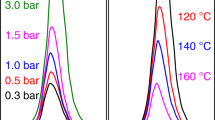Summary
The synthesis, properties and applications of ethylene–carbon monoxide (E/CO) copolymers are described. These photodegradable polymers are now used to control plastic litter caused by polyethylene loop carriers for beverage cans which have been reported to entangle and endanger wildlife.
The rate of photodegradation of E/CO polymers depends on the amount of CO incorporated. At 1% CO, E/CO took about six days to reach zero elongation at break in Texas, USA, and 13% CO film reached the same stage in less than one day. Degradation was substantially longer in more northern climates. At 2.7% CO, E/CO lost nearly all elongation in about a month in New Jersey, USA, and within two months it broke up and blew away. Blends of E/CO polymers with regular polyethylene degraded much more slowly, probably because of the absence of free radical formation in the predominantly Norrish II scission process.
Other packaging applications of E/CO polymers are expected to develop if the Food and Drug Administration sanctions their use in food packaging as petitioned.
Access this chapter
Tax calculation will be finalised at checkout
Purchases are for personal use only
Preview
Unable to display preview. Download preview PDF.
Similar content being viewed by others

References
Brubaker, M. M. (1950) Interpolymers of carbon monoxide and method of preparing the same, US Pat. 2,495,286 (to DuPont), 24 January.
Statz, R. J. and Dorris, M. C. (1987) Photodegradable polyethylene, Proceedings of Symposium on Degradable Plastics, SPI, Washington DC, 10 June, pp. 51–5.
Hartley, G. H. and Guillet, J. E. (1968) Photochemistry of ketone polymers. I. Studies of ethylene-carbon monoxide copolymers, Micromolecules, 1, No. 2 March–April, 165–9.
ITW Degradable Hi-Cone Carriers, (1983) Illinois Tool Works, Itasca, IL, p. 15.
Congressional Record (S-5874), 13 May (1988).
Coca-Cola opts for degradable six-pack rings, J of Commerce, 15 September, (1988).
Heppenheimer, T. A. (1988) Plastics makers clean up from litter, High Technology Business, August, 30.
Lancaster, G. M. and Allen, J. A. (1986) High-frequency heatable plastics, US Pats 4,600,614 and 4,601,948 (to Dow Chemical).
Ward, R. M. and Kelley, D. C. (1988) Ethylene–carbon monoxide extrudable adhesive copolymers for polyvinylidene chloride, TAPPI Journal, June, 140–4.
The Q Panel Company, Cleveland, Ohio.
Harlan, G. M. and Nicholas, A. (1987) Degradable ethylene–carbon monoxide copolymer, Proceedings of Symposium on Degradable Plastics, SPI, Washington, DC, 10 June, pp. 14–17.
Atlas Electrical Devices Company, Chicago, Illinois.
Brennan, P. and Fedor, C. (1986) Sunlight, UV and accelerated weathering, The Q Panel Company, Cleveland, Ohio.
Titus, J. B. (1968) The Weatherability of Polyolefins, Plastec Report No. 32, Plastics Technical Evaluation Center, Picatinny Arsenal, Dover NJ.
Potts, James E. (1983) Plastics, environmentally degradable, in The Encyclopedia of Chemical Technology, John Wiley and Sons.
Li, S. K. L. and Guillet, J. E. (1980) Photochemistry of ketone polymers. XIV. Studies of ethylene copolymers, Journal of Polymer Science: Polymer Chemistry Edition, 18, 2221–38.
Kmiec, C. (1990) Ethylene–carbon monoxide copolymer: The established degradable plastic, RECYCLE ′90, Forum and Exposition, Davos, Switzerland, 29–31 May.
Baiduff, D. C. and Jabarin, S. A. (1987) US Pats 4,714,741 and 4,709,808.
Van Leer Industries, (1975) FR 2253553.
Sumitomo Chemical, (1975) JP 50034044.
Coquelin, R. (1971) FR 2038807.
Rolland, L. P. (1987) WO 8704175.
Smock, D. (1987) Are shipboard plastics all washed up? Plastics World, September, 75–9.
Editor information
Editors and Affiliations
Rights and permissions
Copyright information
© 1995 Springer Science+Business Media Dordrecht
About this chapter
Cite this chapter
Harlan, G., Kmiec, C. (1995). Ethylene-carbon monoxide copolymers. In: Scott, G., Gilead, D. (eds) Degradable Polymers. Springer, Dordrecht. https://doi.org/10.1007/978-94-011-0571-2_8
Download citation
DOI: https://doi.org/10.1007/978-94-011-0571-2_8
Publisher Name: Springer, Dordrecht
Print ISBN: 978-94-010-4253-6
Online ISBN: 978-94-011-0571-2
eBook Packages: Springer Book Archive



